Adb4 more twice as long as abd3; most species have blue pigmentation but this is only clearly visible in natural light and easily lost in alcohol-preserved specimens. Presence or absence of scales on legs and antennae are an important character in this group but these can be very difficult to see (especially confirming their absence) so exercise caution.
Pale species; Th2 not prominent:
- Lepidocyrtus lanuginosus: predominantly pale with traces of blue pigment on the head, thorax and legs; no scales on the legs or antennae; interocular macrosetae present.
- Lepidocyrtus lignorum: predominantly pale with faint traces of blue pigment on the head, thorax and legs; scales present on the legs and ant1+ant2, no scales on ant3+ant4 (c.f. L. curvicollis); eyepatch roundish (less elongate than other species); no interocular macrosetae:
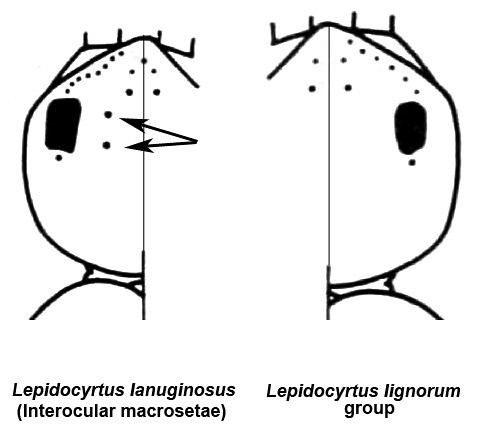
Lepidocyrtus lignorum: angle between head and body relatively straight, >=90 degrees, scales on the 2 basal antennal segments and legs, no scales on ant3 and ant4, eyepatch roundish (less elongate than other species):
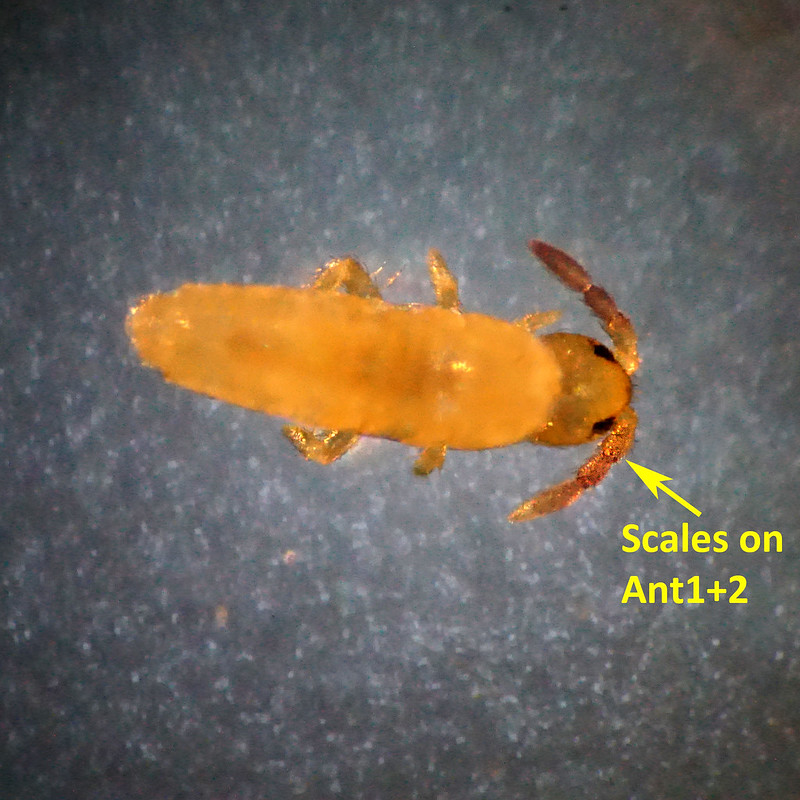
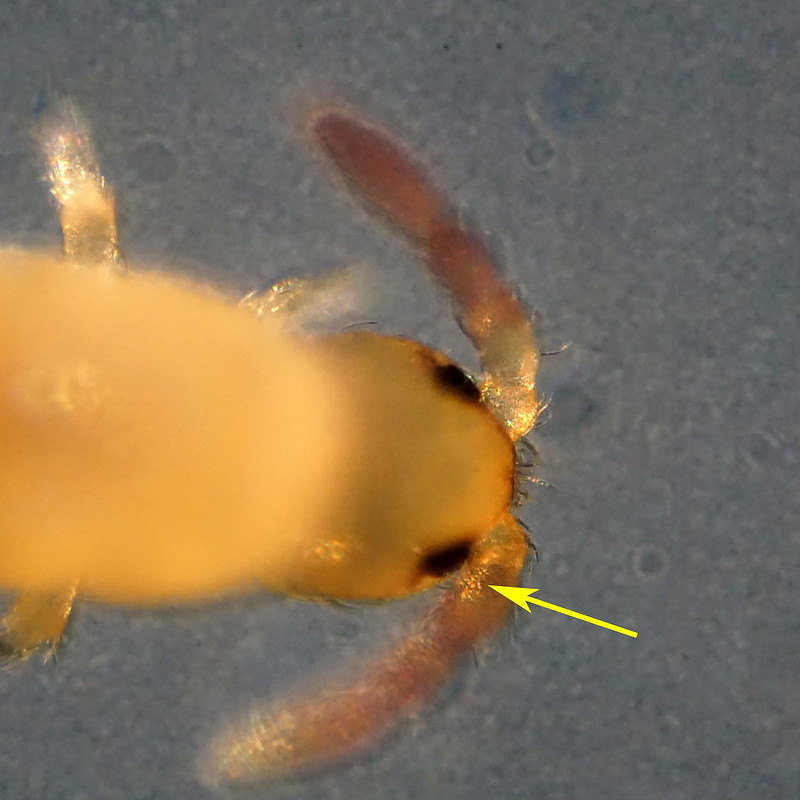
Blue/violet pigmented species; Th2 prominent to varying degrees:
- Lepidocyrtus curvicollis: a pale species with traces of pigment on the head, thorax and legs; Th2 overhangs the head dorsally - head tucked under thorax; scales are present on the legs, and on ant1-4 (like L. paradoxus).
- Lepidocyrtus cyaneus: blue pigment on the head, thorax, abdomen and legs (less obvious in artificial light), no scales on legs or antennae. Note that the blue pigment of L. cyaneus can only be seen in descaled specimens as the blue is not an iridisation colour of the scales but an intrinsic colour of the naked (descaled) skin. Interocular macrosetae present.
- Lepidocyrtus violaceus: strong blue pigment on the head, thorax, abdomen and legs; scales on the legs and ant1+ant2, no scales on ant3+ant4; no interocular macrosetae.
- Lepidocyrtus paradoxus (absent from UK?): dark body, pale legs; Th2 very prominent, angle between head and body <90 degrees and scales on the 2 basal antennal segments and legs.
Lepidocyrtus cyaneus: blue pigment on the head, thorax, abdomen and legs (less obvious in artificial light), no scales on legs or antennae. Note that the blue pigment of L. cyaneus can only be seen in descaled specimens as the blue is not an iridisation colour of the scales but an intrinsic colour of the naked (descaled) skin. Interocular macrosetae present:

Lepidocyrtus violaceus: strong blue pigment on the head, thorax, abdomen and legs, scales on the legs and on the first (ant1) and second (ant2) segments of the antennae, but NOT on ant3 and ant4:
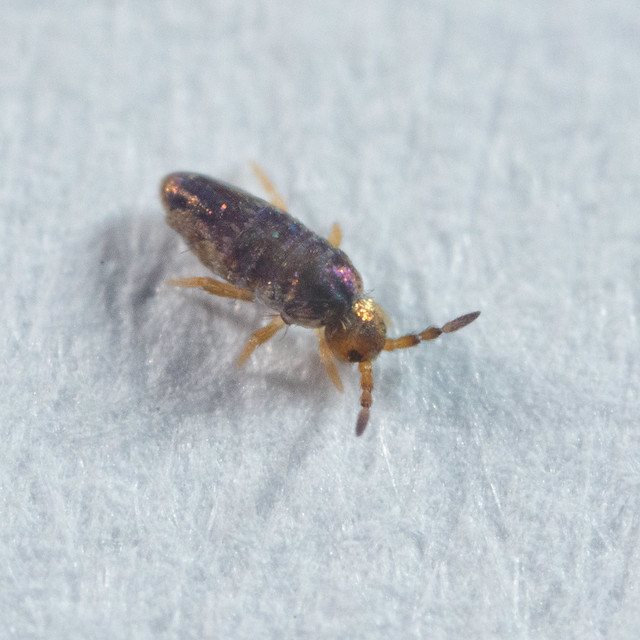
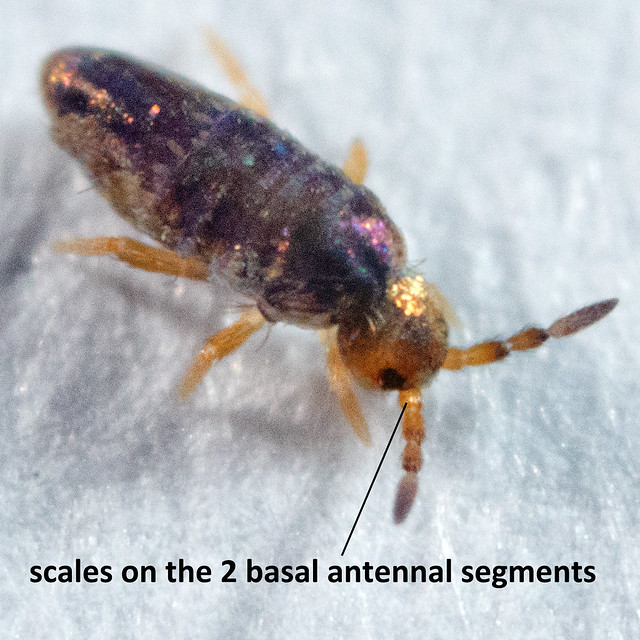
Lepidocyrtus paradoxus: angle between head and body < 90 degrees, scales on the 2 basal antennal segments and legs. Photo by Marie Huskens:
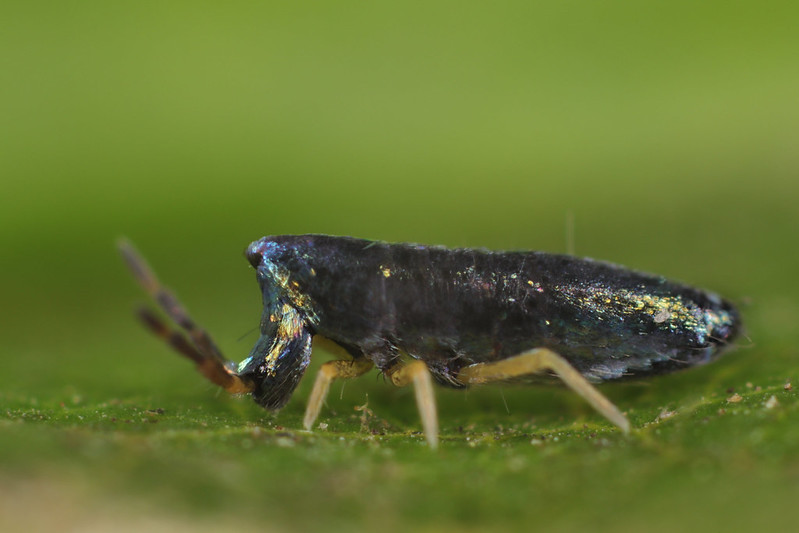

No comments:
Post a Comment
Comments welcome, I will respond as soon as I can.
Note: only a member of this blog may post a comment.